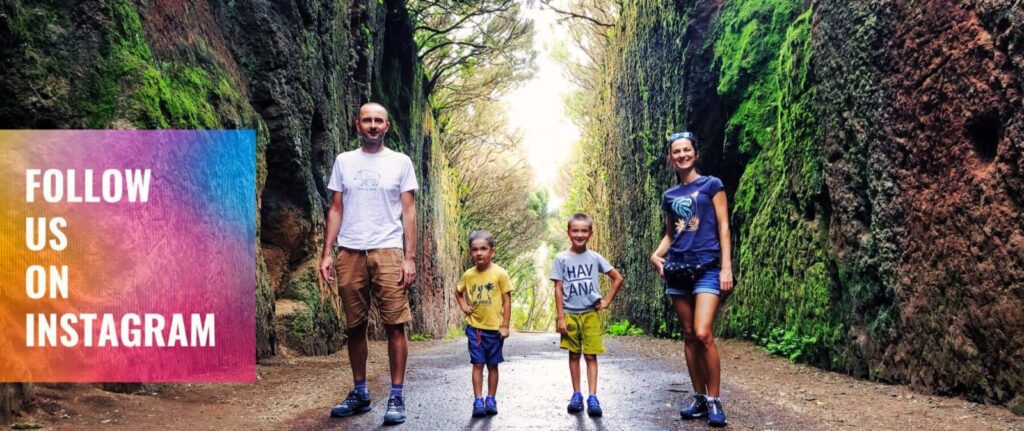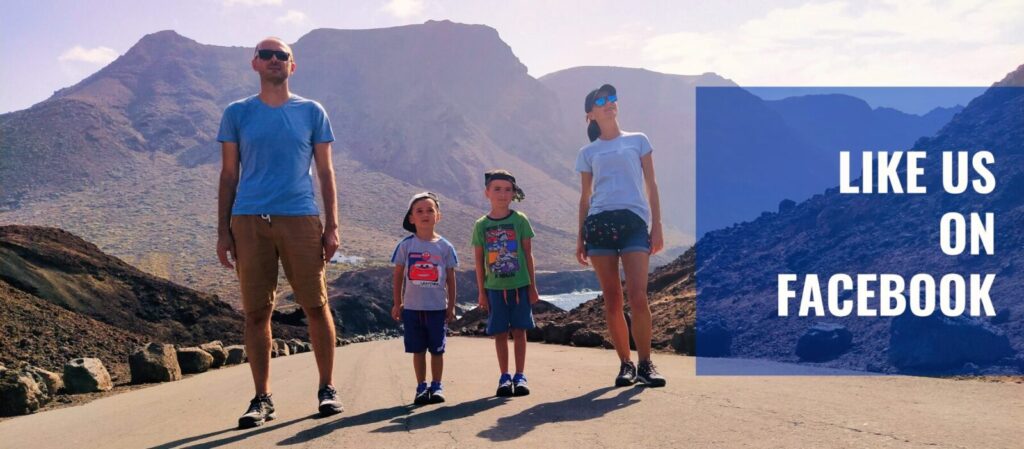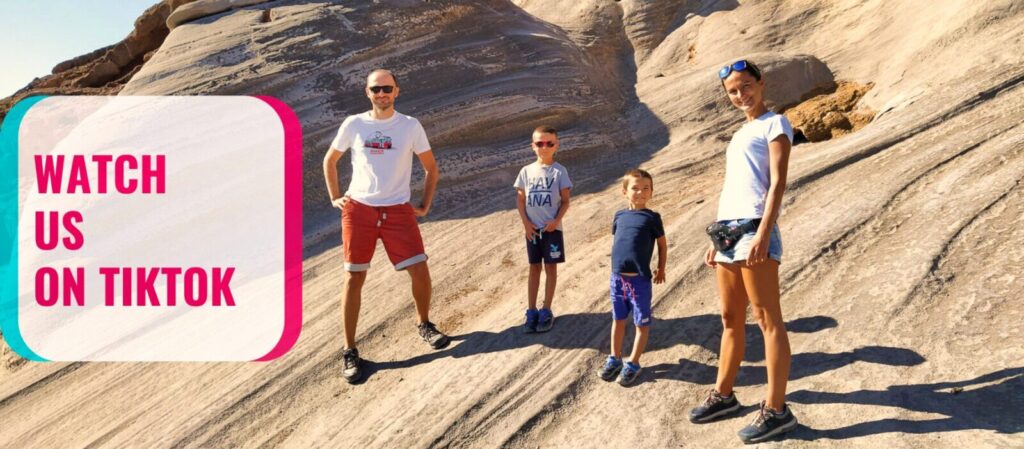Tenerife, the largest of the Canary Islands, is renowned for its stunning beaches, volcanic landscapes and vibrant tourist destinations. However, beneath this postcard-perfect exterior lies a fascinating collection of abandoned places that tell stories of forgotten dreams, failed projects and historical mysteries. For urban exploring enthusiasts and curious travelers seeking to discover the island’s hidden face, these lost places Tenerife offers provide an extraordinary glimpse into the past.
As residents of this remarkable island, we’ve spent countless hours exploring these mysterious locations, uncovering their stories, and photographing their haunting beauty. From abandoned sanatoriums perched on dramatic cliffs to forgotten industrial complexes that once promised prosperity, abandoned places near me on Tenerife reveal a darker, more intriguing side of paradise that most visitors never discover.
The world of urbex Tenerife extends far beyond typical tourist attractions, offering adventurous explorers the chance to witness how time, nature, and neglect can transform ambitious projects into atmospheric ruins. These Tenerife lost places aren’t just empty buildings – they’re monuments to human ambition, architectural curiosities, and windows into the island’s complex social and economic history.
Whether you’re an experienced urban exploring Tenerife enthusiast or simply curious about the island’s hidden gems, this comprehensive guide will take you through the most fascinating abandoned building exploration opportunities on the island. From easily accessible roadside ruins to challenging hikes that reward brave explorers with incredible discoveries, we’ll share the locations, stories, and practical advice you need for safe and responsible Tenerife urban exploration.
Complete Guide to Abandoned Places Tenerife
Sanatorio de Abona – The Unfinished Leper Colony
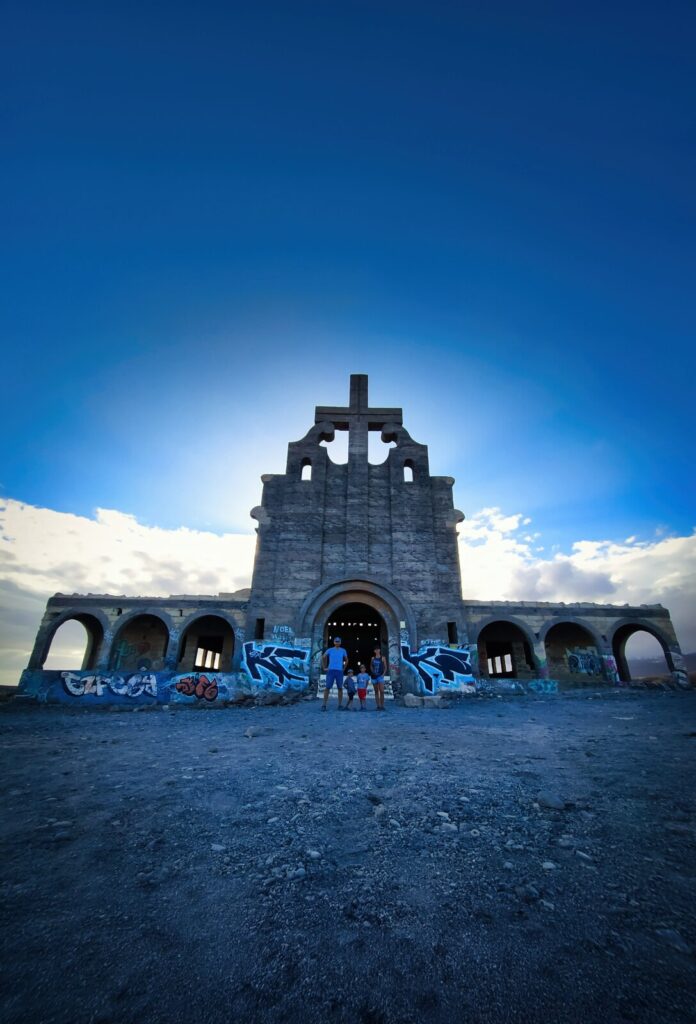
The Sanatorio de Abona stands as one of the most haunting and historically significant abandoned places Tenerife has to offer. Located on the southeastern coast near the village of Abades, this massive complex of over 40 buildings was constructed in 1943 under Franco’s regime as a leper colony, yet never housed a single patient.
The story of this ghost town Tenerife begins with the island’s significant leprosy problem in the early 20th century. With nearly 200 reported cases on Tenerife alone, the authorities decided to construct a self-sufficient isolation facility in this remote coastal location. The ambitious project included a hospital, school, dormitories, crematorium, and a striking church with a prominent bell tower that can be seen from the southern motorway.
What makes this location particularly fascinating for urbex Tenerife enthusiasts is the scale and completeness of the abandoned infrastructure. Walking through the complex feels like exploring a frozen moment in time – walls stand intact, rooms remain eerily empty, and the architectural details reveal the careful planning that went into creating what was intended to be a small city.
The site’s abandonment came about through a twist of medical fortune. Just as construction neared completion, effective treatments for leprosy were discovered, making the isolation facility obsolete before it could fulfill its intended purpose. The military briefly used the grounds for training exercises, evidenced by bullet holes still visible in some walls, but eventually abandoned it entirely.
For those interested in exploring abandoned places Tenerife, the Sanatorio de Abona offers one of the most accessible and rewarding experiences. The complex can be reached by car with parking available in nearby Abades village, followed by a short walk to the site. The dramatic setting, with buildings silhouetted against the Atlantic horizon, creates particularly stunning photography opportunities during sunrise and sunset.
Practical Information:
- Access: Drive to Abades village, park in town, 5-minute walk to site
- Public Transport: Bus 430 from Santa Cruz or bus 115/116 from southern resortse
- Best Time: Early morning for sunrise photography
- Safety: Explore at your own risk, buildings are unsecured and deteriorating
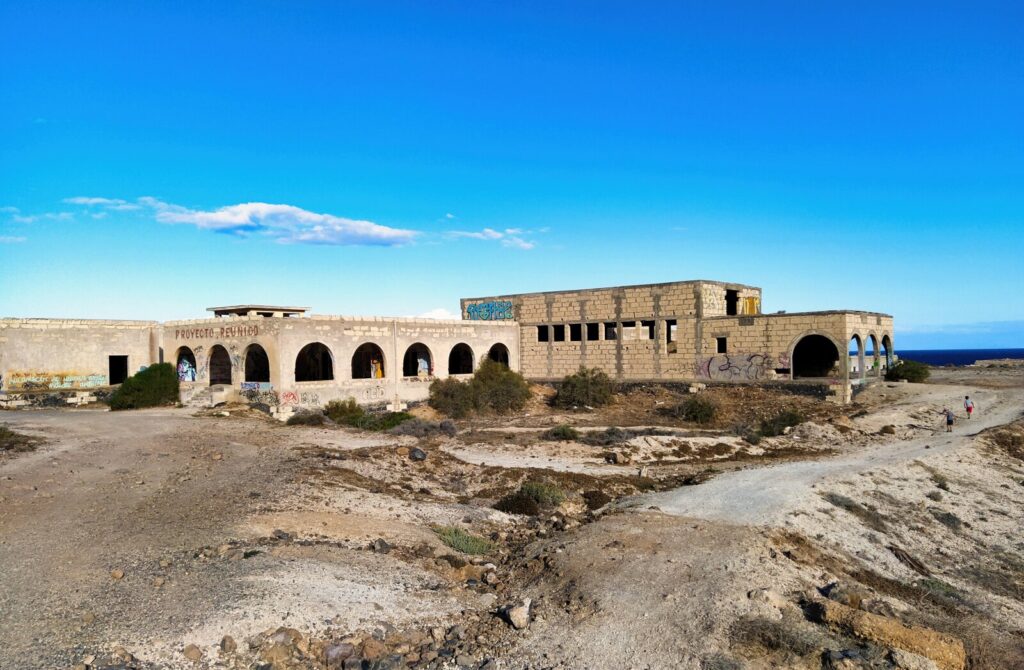
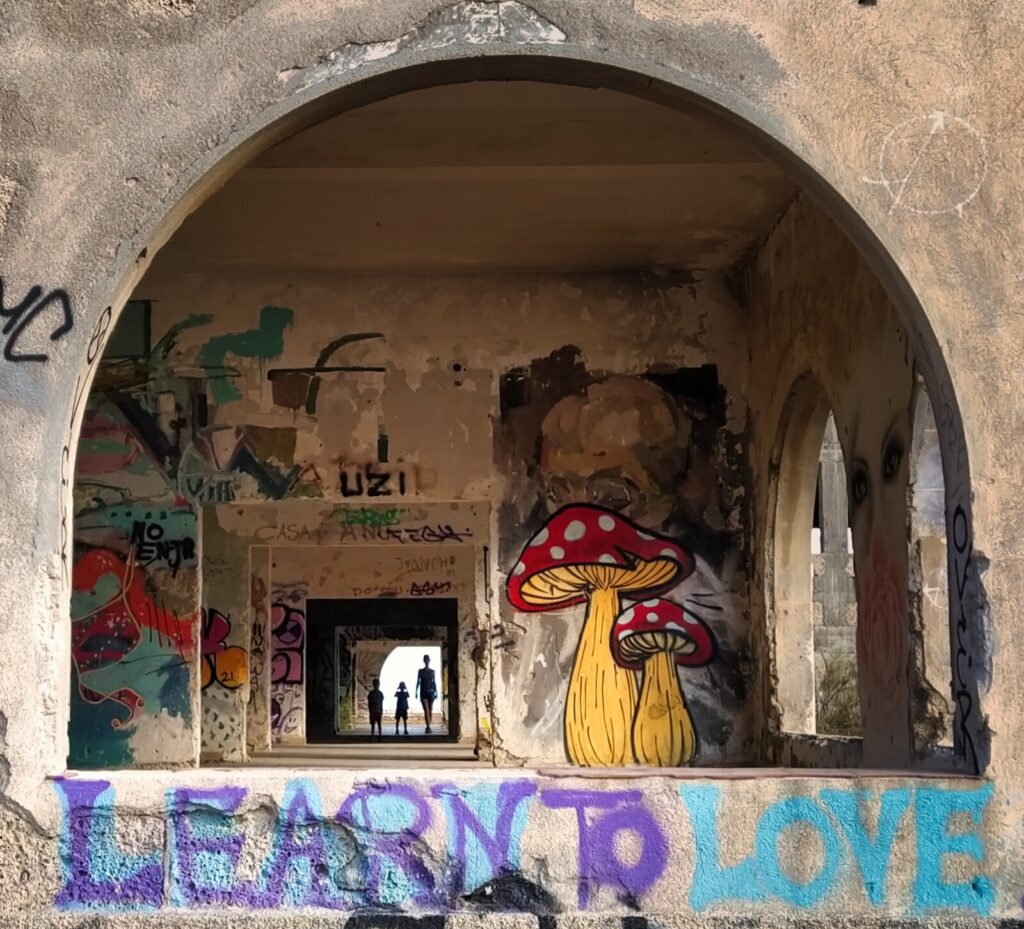
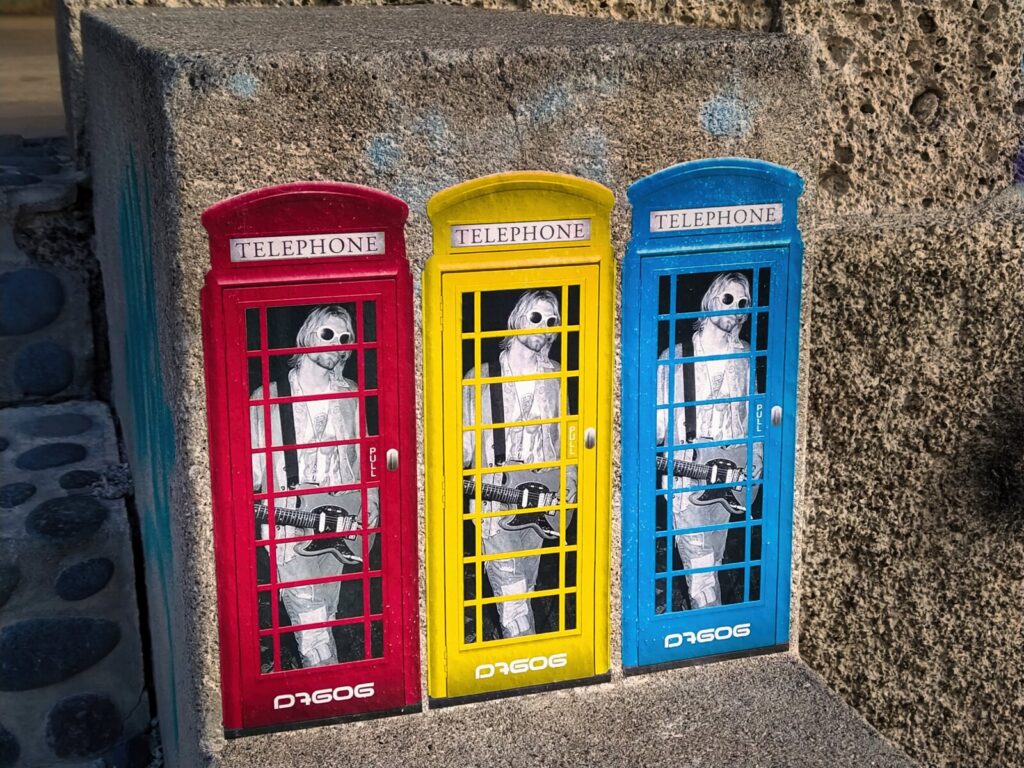
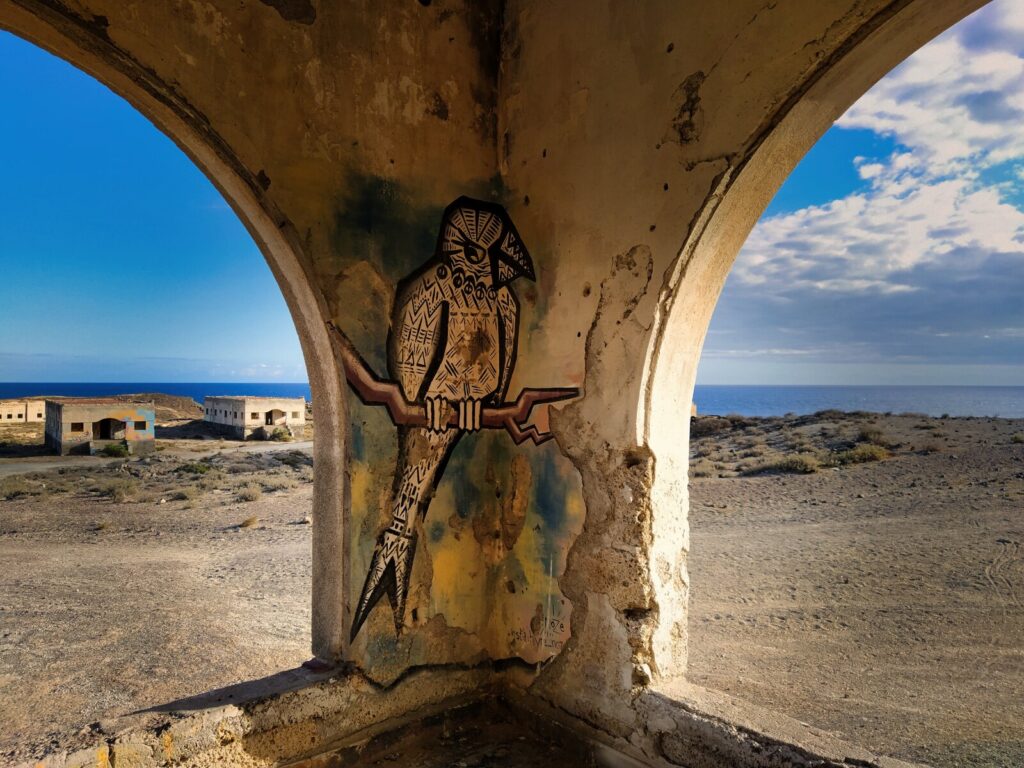
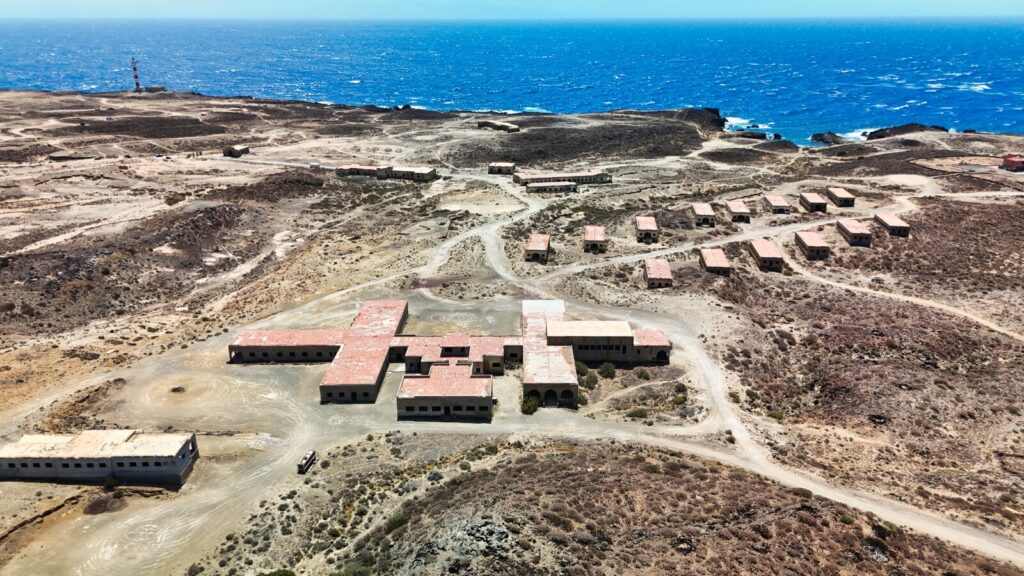
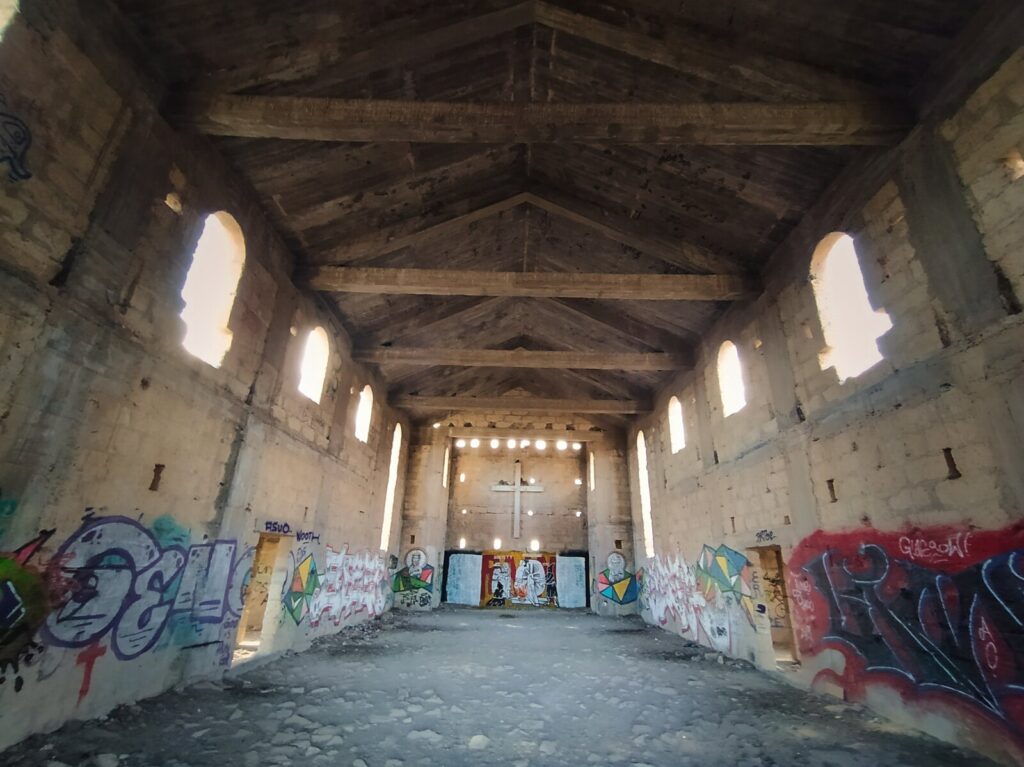
Casa Hamilton (Elevador de Aguas de Gordejuela) – Industrial Heritage on the Cliffs
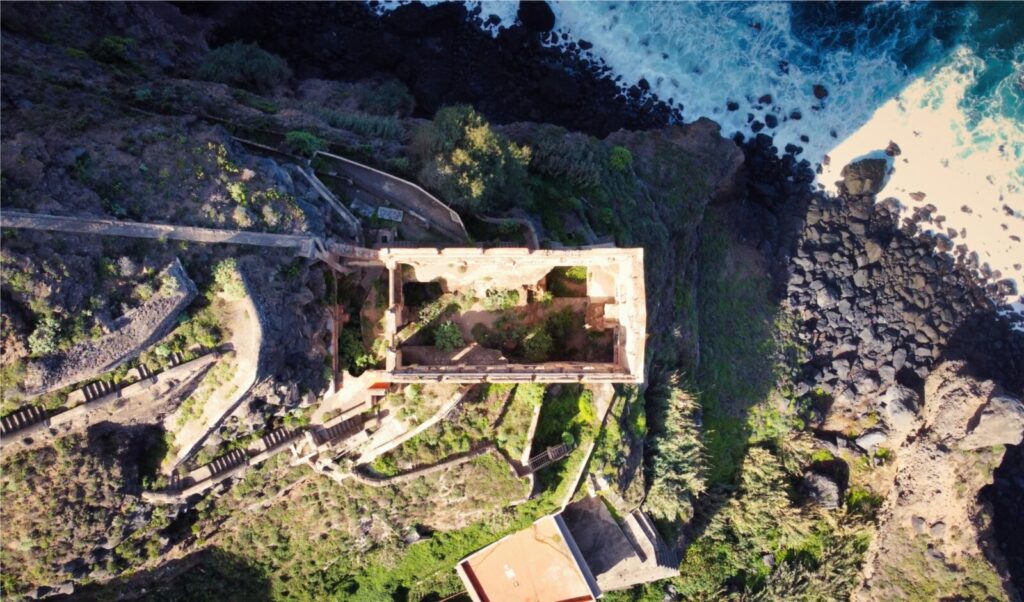
Perched dramatically on the cliffs near Los Realejos, Casa Hamilton represents one of the most photogenic and historically significant abandoned places near me on Tenerife. Built in 1903 by the English company Hamilton, this remarkable structure once housed one of the most advanced industrial facilities in the Canary Islands.
The building’s purpose was as ingenious as its construction was challenging. The Elevador de Aguas de Gordejuela was designed to pump freshwater from the Gordejuela springs at sea level up a 200-meter cliff to irrigate banana plantations in the Orotava Valley. The project cost approximately one million Spanish pesetas – an enormous sum for the time – and included the installation of Tenerife’s first steam engine.
What makes Casa Hamilton particularly appealing for urban exploring Tenerife is its spectacular setting and the way nature has begun to reclaim the structure. The multi-level ruins, with their distinctive industrial architecture, create a striking contrast against the lush vegetation that has grown around and through the building. Palm trees, dragon trees, and native flora have transformed the site into a natural garden where industrial heritage meets subtropical wilderness.
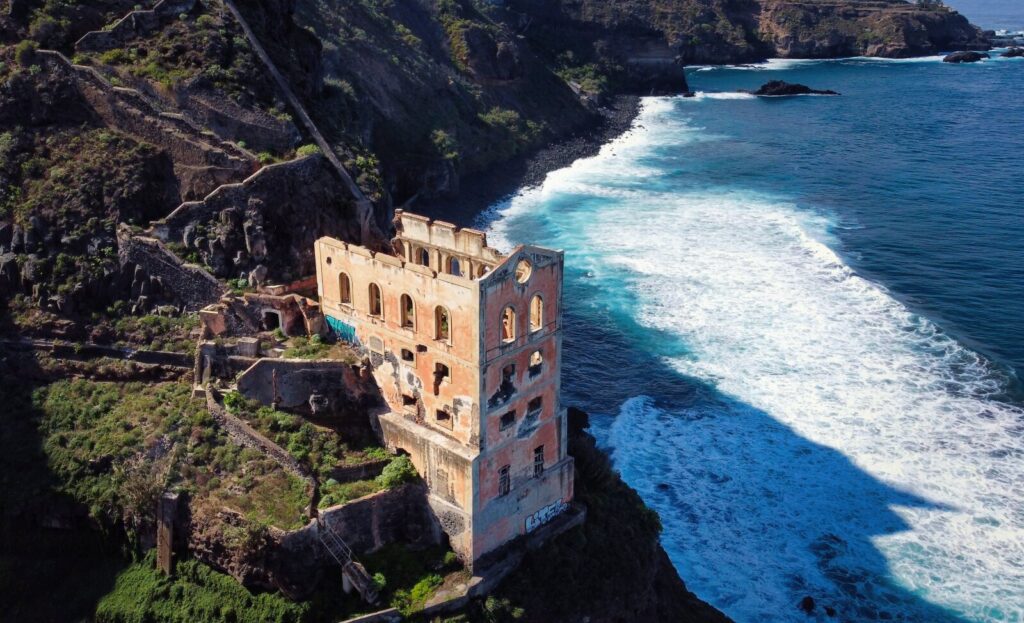
The facility originally included several components: the main pumping station building, worker accommodations, a warehouse, and a 43-meter-tall chimney that has since collapsed. The water lifted by this system not only served agricultural purposes but also powered a flour mill, making it a crucial piece of the island’s economic infrastructure in the early 20th century.
For those seeking Tenerife lost places with both historical significance and natural beauty, Casa Hamilton offers an unparalleled experience. The site is accessible via a scenic coastal walk that includes waterfalls, palm groves, and stunning ocean views. The surrounding area has become part of several hiking trails, making it possible to combine abandoned building exploration with nature walking.
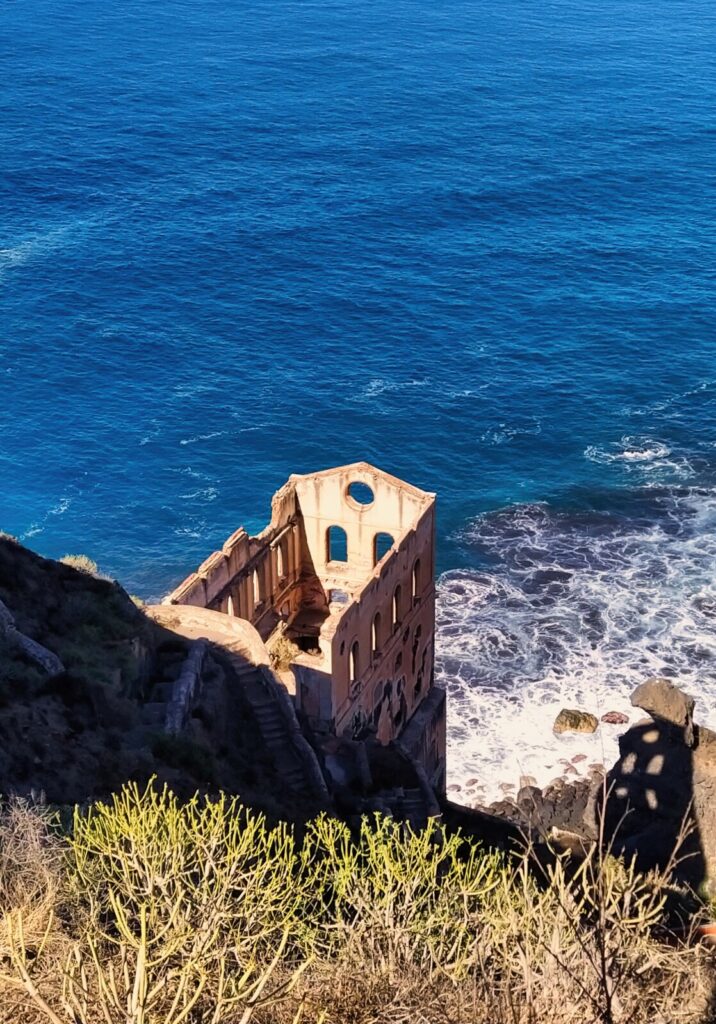
The ruins are particularly magical during sunset, when the golden light illuminates the old stone walls and creates dramatic silhouettes against the ocean backdrop. This timing also provides excellent opportunities for photography, as the interplay of light, shadow, and architectural decay creates compelling compositions.
Practical Information:
- Access: Drive to Los Realejos, follow signs toward Gordejuela or Casa Hamilton viewpoint
- Parking: Three parking areas near the viewing point and nearby restaurant
- Public Transport: Bus line 381 to nearest coastal path stop
- Best Time: Late afternoon for sunset photography
- Hiking: Part of scenic coastal trail including waterfall and beach access
Los Roques de Fasnia – Hidden Village in the Rocks
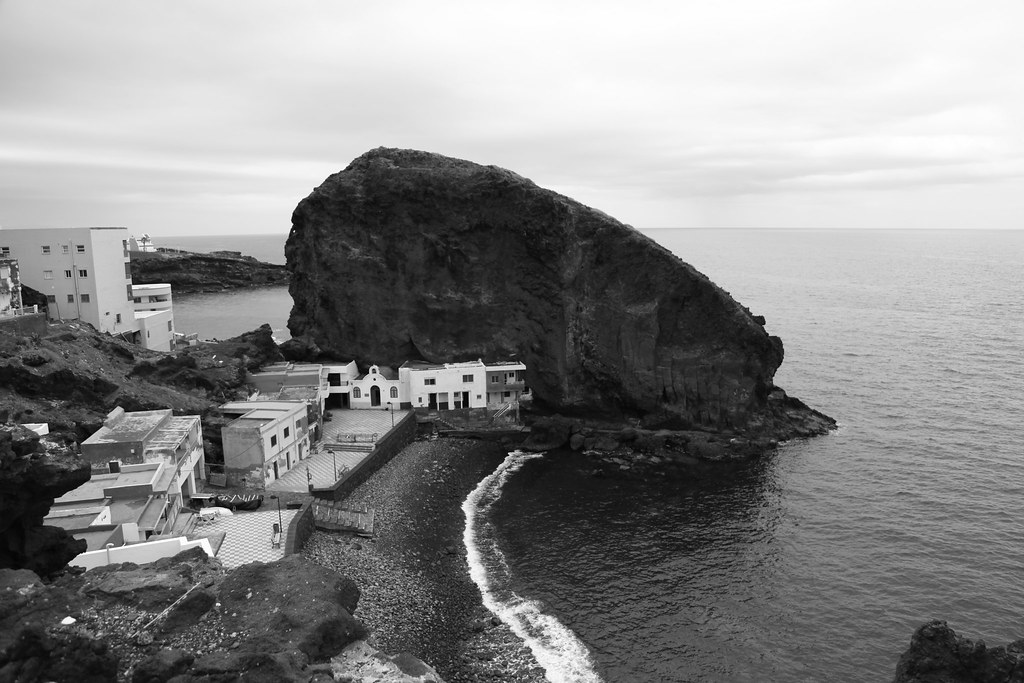
On the eastern coast of Tenerife, the mysterious settlement of Los Roques de Fasnia represents one of the most unusual abandoned places near me on the island. This partially abandoned village, built directly into volcanic rock formations, offers a fascinating glimpse into how Canarian communities adapted to challenging geological conditions.
The village is located just behind the distinctive gas station near Fasnia, accessible by a short walk down toward the ocean. What makes Los Roques particularly intriguing for exploring abandoned places Tenerife is the way the settlement is divided into two distinct sections: the abandoned area that tells stories of natural disasters and economic hardship, and the still-inhabited section that demonstrates remarkable resilience.
The abandoned section centers around a small plaza with a chapel and houses carved directly into the volcanic rock. These structures, built using traditional Canarian techniques, showcase how islanders learned to work with rather than against the challenging landscape. The dark tunnel that connects different parts of the village adds an element of mystery, while the collapsed swimming pool and deteriorating buildings provide evidence of more prosperous times.
The history of Los Roques is closely tied to the island’s volcanic activity and the frequent natural disasters that have shaped Canarian life. The abandoned section was evacuated following geological instability, but the remaining structures continue to fascinate visitors with their unique integration of human habitation and natural rock formations.
For urbex Tenerife enthusiasts, Los Roques offers several unique elements: the integration of architecture and geology, the contrast between abandoned and inhabited areas, and the opportunity to explore safely while still experiencing the thrill of discovery. The site’s coastal location also provides beautiful ocean views and access to a black sand beach.
The village demonstrates the precarious relationship between human settlement and natural forces in the Canary Islands. While parts of the community have been abandoned due to safety concerns, the remaining residents continue to maintain their connection to this extraordinary place, creating a living museum of Canarian adaptation and resilience.
Practical Information:
- Location: Near Fasnia, eastern coast
- Access: Short walk from distinctive gas station
- Features: Houses built into rock, abandoned plaza, chapel
- Beach: Black sand beach adjacent to village
- Safety: Respect barriers and inhabited areas
Cottage Complex at El Porís – Unfinished Dreams by the Sea
Near the coastal town of El Porís in Arico, a strange collection of abandoned buildings creates one of the most visually striking and mysterious lost places Tenerife has to offer. This unusual site, featuring structures that resemble something from a Western film set, represents the remnants of a residential complex that never came to fruition.
The main attraction consists of three peculiar buildings with distinctive architectural features that seem completely out of place in the Canarian landscape. These structures, which have been enhanced with colorful street art by local artists including Lauro Samblás, create a surreal scene that blends abandonment with artistic expression.
Adjacent to these main buildings, visitors will find additional evidence of the failed development project: a half-finished house that reveals the construction techniques and materials intended for the complex, a derelict swimming pool that hints at the luxury lifestyle the developers envisioned, and a dramatic staircase that leads nowhere, creating a particularly photogenic element for urbex Tenerife photographers.
The site’s history remains somewhat mysterious, with local accounts suggesting these were model homes for a larger residential development that was planned but never realized. The buildings served as showpieces to attract potential buyers and investors, but economic circumstances or planning difficulties prevented the project from moving forward.
What makes this location particularly appealing for urban exploring Tenerife is the combination of architectural curiosity and artistic intervention. The street art has transformed what could have been a depressing failure into a colorful and thought-provoking installation that comments on development, abandonment, and artistic renewal.
The El Porís location also offers excellent opportunities for photography, with the contrast between the abandoned structures and the dramatic coastal landscape creating compelling compositions. The site’s proximity to the Faro de la Punta de Abona lighthouse provides additional exploration opportunities for those interested in combining abandoned places with coastal hiking.
Practical Information:
- Location: El Porís, Arico municipality
- Access: Dirt road from main coastal road
- Features: Unique architecture, street art, unfinished pool
- Photography: Excellent opportunities for urban art photography
- Nearby: Faro de la Punta de Abona lighthouse
Las Ventanas de Güímar – Windows to the Past
High in the mountains above Güímar, Las Ventanas (The Windows) represents one of the most adventurous and rewarding abandoned places tenerife explorers can discover. This remarkable site, featuring concrete tunnels with window-like openings carved into the mountainside, offers both historical intrigue and spectacular panoramic views.
The journey to Las Ventanas begins with a challenging drive up a deteriorating dirt road that requires careful navigation and preferably a four-wheel-drive vehicle. The hike itself is demanding, leading steeply upward through varying terrain until reaching the forest area where the concrete channel system begins.
What makes Las Ventanas extraordinary for Tenerife urban exploration is the combination of industrial archaeology and natural beauty. The concrete channels and tunnels, likely part of a water management system from the mid-20th century, create a fascinating contrast with the surrounding forest environment. The “windows” – openings in the tunnel walls – provide dramatic frames for views across the Güímar Valley and out to the Atlantic Ocean.
The site’s most striking feature is the presence of a yellow excavator, apparently abandoned during construction or maintenance work, now permanently attached to the rock face. This piece of heavy machinery, slowly being reclaimed by nature, adds a surreal element to the already mysterious landscape.
Exploring the tunnels requires flashlights and careful navigation, as the concrete channels lead through dark sections before emerging at the viewing windows. The experience of moving from darkness into light, with spectacular views suddenly revealed, creates a powerful emotional impact that makes the challenging journey worthwhile.
Important Safety Warning: Las Ventanas is an extremely dangerous location that should only be attempted by experienced hikers with proper equipment and training. The concrete structures are deteriorating, the tunnels can be unstable, and the mountain location presents numerous hazards including sudden weather changes, loose rocks, and potential falls. We have not personally visited this site due to these significant safety concerns, and we strongly advise against attempting this exploration without extensive preparation and understanding of the risks involved. Any exploration is entirely at your own risk and responsibility.
For those interested in Tenerife lost places that combine physical challenge with historical mystery, Las Ventanas offers an unparalleled experience. The site’s elevation of over 1,000 meters above sea level provides not only stunning views but also a different climate and vegetation zone, making it feel like a completely different world from the coastal areas.
For those interested in Tenerife lost places that combine physical challenge with historical mystery, Las Ventanas offers an unparalleled experience. The site’s elevation of over 1,000 meters above sea level provides not only stunning views but also a different climate and vegetation zone, making it feel like a completely different world from the coastal areas.
Practical Information:
- Access: Extremely challenging – 4WD recommended
- Difficulty: Strenuous hike, not suitable for all fitness levels
- Safety: Explore at your own risk, unofficial trail
- Equipment: Flashlights essential, sturdy hiking boots required
- Weather: Check conditions, fog can be dangerous at elevation
Practical Tips for Urban Exploring Tenerife
Safety and Legal Considerations
When exploring abandoned places Tenerife, safety should always be your top priority. These sites are inherently dangerous due to structural instability, broken glass, rusty metal, and other hazards. Always wear appropriate clothing including sturdy boots, long pants, and gloves. Bring flashlights, first aid supplies, and ensure someone knows your planned route and expected return time.
Legal considerations are equally important. Many abandoned sites are private property, and entering without permission constitutes trespassing. Always research the legal status of locations before visiting, and respect any barriers or warning signs. Some sites may be protected heritage locations where access is strictly prohibited.
Best Times and Conditions
The best times for Tenerife urban exploration depend on your specific goals and the locations you plan to visit. Early morning hours often provide the best lighting for photography and the coolest temperatures for hiking to remote sites. Late afternoon can offer dramatic sunset opportunities but may leave you navigating in darkness.
Weather conditions significantly impact both safety and experience quality. Check forecasts before heading out, particularly for mountain locations where fog, rain, or wind can create dangerous conditions. Coastal sites may be affected by tides and wave conditions, while inland locations can experience rapid temperature changes.
Equipment and Preparation
Essential equipment for exploring abandoned places Tenerife includes sturdy footwear, protective clothing, flashlights or headlamps, first aid supplies, and navigation tools. Camera equipment should be protected in waterproof bags, and extra batteries are crucial for longer explorations.
Physical preparation is important for sites requiring hiking or climbing. Start with easier locations and gradually progress to more challenging explorations as your fitness and experience improve. Always inform others of your plans and expected return times.
Photography and Documentation
When photographing Tenerife lost places, respect the locations and avoid causing additional damage. Don’t move objects or create artificial arrangements for photos. Natural light often provides the best results, particularly during golden hour periods.
Consider the historical and cultural significance of these sites when documenting them. Your photographs can serve as important historical records, so focus on capturing both overall contexts and significant details that tell the story of each location.
Respect and Preservation
The urbex community follows the principle of “take only photographs, leave only footprints.” This means avoiding vandalism, graffiti, or removal of artifacts. These sites are finite resources that should be preserved for future explorers and researchers.
Respect local communities and private property. Many abandoned sites are located near active communities, and your behavior reflects on all urban explorers. Be discrete, avoid large groups, and don’t share specific location details that could lead to increased damage or safety issues.
Frequently Asked Questions
The legal status varies by location. Many abandoned sites are on private property, making unauthorized entry illegal. Research each location beforehand and respect all barriers and warning signs. Some sites may be accessible from public areas without trespassing.
Always wear protective equipment including sturdy boots, long pants, and gloves. Bring flashlights, first aid supplies, and tell someone your plans. Avoid entering structurally unsound buildings and never explore alone. Be aware of hazards like broken glass, rusty metal, and unstable floors.
The Sanatorio de Abona and thermal plant in El Médano are easily accessible by car and require minimal hiking. Casa Hamilton offers a moderate challenge with scenic coastal walking. More demanding sites like Las Ventanas should only be attempted by experienced hikers with proper equipment.
The mild climate allows year-round exploration, but autumn and winter months offer cooler temperatures for hiking and fewer tourists. Spring provides excellent lighting conditions, while summer can be extremely hot for inland and elevated locations.
Summary – Discovering Tenerife’s Hidden History
Abandoned places Tenerife offers a fascinating parallel universe to the island’s famous beaches and volcanic landscapes. These lost places Tenerife tell stories of human ambition, technological innovation, social change, and the inevitable passage of time. From the haunting corridors of the Sanatorio de Abona to the dramatic clifftop ruins of Casa Hamilton, each site provides unique insights into the island’s complex history.
For urbex Tenerife enthusiasts, these locations offer everything from easily accessible roadside ruins to challenging adventures that require serious hiking and exploration skills. The diversity of abandoned places near me on Tenerife ensures that explorers of all experience levels can find suitable challenges and rewards.
Urban exploring tenerife responsibly means respecting these sites as historical and cultural resources. By following safety guidelines, respecting property rights, and preserving these locations for future generations, we can continue to learn from and appreciate these remarkable windows into the past.
Whether you’re drawn to the architectural curiosities of failed development projects, the industrial heritage of early 20th-century infrastructure, or the social history embedded in abandoned institutions, Tenerife urban exploration offers unlimited opportunities for discovery and reflection.
For those inspired to explore beyond abandoned places, consider combining your urban exploration with other unique island experiences. Check out our guide to unusual things you must do in Tenerife for authentic cultural experiences, or discover Tenerife’s most spectacular viewpoints for breathtaking panoramic vistas. And don’t miss our comprehensive guide to guachinche dining experiences for authentic Canarian cuisine.



